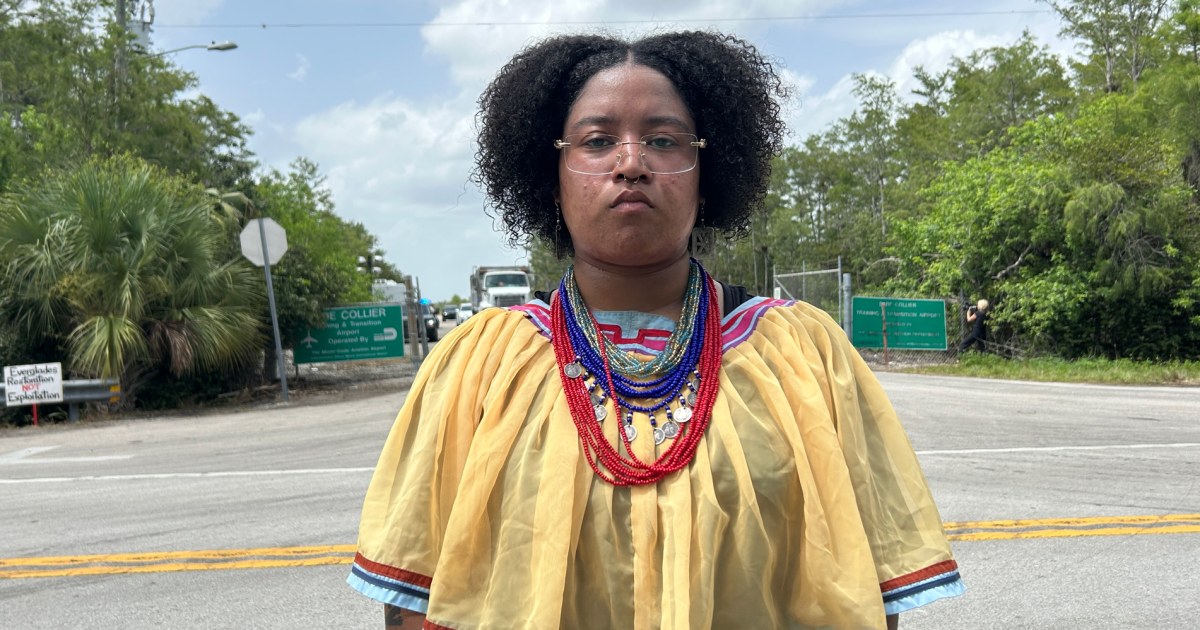The homes of Miccosukee and Seminole people, as well as their ceremonial sites, surround the detention center on three sides.
The constant rumbling of passing dump trucks drowns out the once familiar chirping of birds at the family home of Mae’anna Osceola-Hart in Everglades National Park.
“It’s all-day, all-night truck noise,” says the 21-year-old photographer who describes herself as part Miccosukee and part Seminole, two Florida tribes at the heart of the debate over the detention center known as “Alligator Alcatraz.”
The homes of Miccosukee and Seminole people, as well as their ceremonial sites, surround the detention center on three sides.
Osceola-Hart’s great-grandfather Wild Bill Osceola fought against the development of an airport at the same site where the ICE facility’s construction is now underway.
In 1968, authorities in Dade County, now known as Miami-Dade County, began building the Big Cypress Jetport on land the Miccosukees used for ceremonial practices. The Dade County Port Authority referred to the project as the “world’s largest airport,” with six runways designed to handle large jets, and officials were quoted as calling the environmental and tribal leaders who opposed it “butterfly chasers.”
The airport became a flashpoint for resistance, but in 1969, a coalition including Osceola-Hart’s great-grandfather, fellow tribesmen and conservationists persuaded Florida Gov. Claude R. Kirk Jr. that the airport would damage the Everglades. He ordered construction be stopped. One runway, approximately 10,000 feet in length, was left behind as a training ground for pilots.
Osceola-Hart is proud of her great-grandfather’s efforts to stop the 1960s development, but she is disappointed the Miccosukees lost land they considered sacred. “We got kicked out of ceremonial grounds,” she says.
Finding a safe place to live has been an ongoing battle for the tribes in Florida. Seminoles retreated into the Everglades after the Seminole wars ended in 1858.
…
Leaders of both tribes are constantly advocating for the preservation of the national park’s wildlife and vegetation, but they don’t have authority over how the land is used.
“It’s a long, fraught battle,” says William “Popeye” Osceola, secretary of the Miccosukee Tribe, describing how tribes are constantly fighting for rights over the land they have lived on for more than a century.
…
William Osceola tells young members of his tribe to stay engaged to protect their rights. “Some of these fights, they come in different forms, but it’s still the same fight.” he said.
Osceola-Hart agrees. “This is history repeating itself,” she says.

https://www.nbcnews.com/news/us-news/alligator-alcatraz-detention-center-personal-rcna215824
